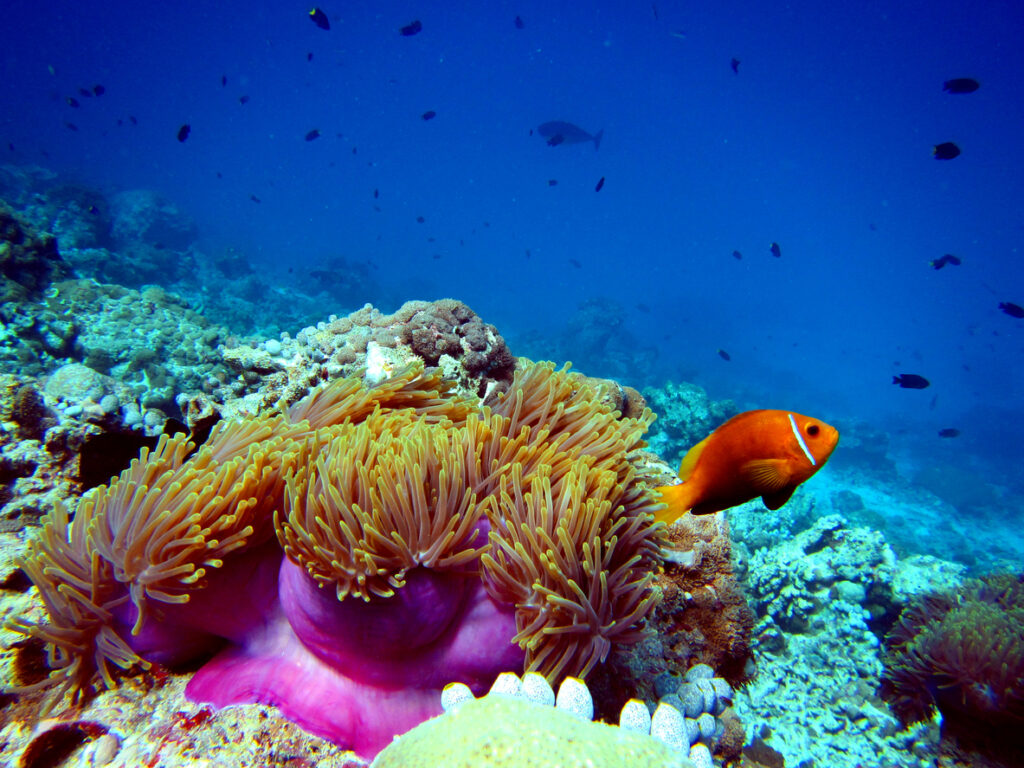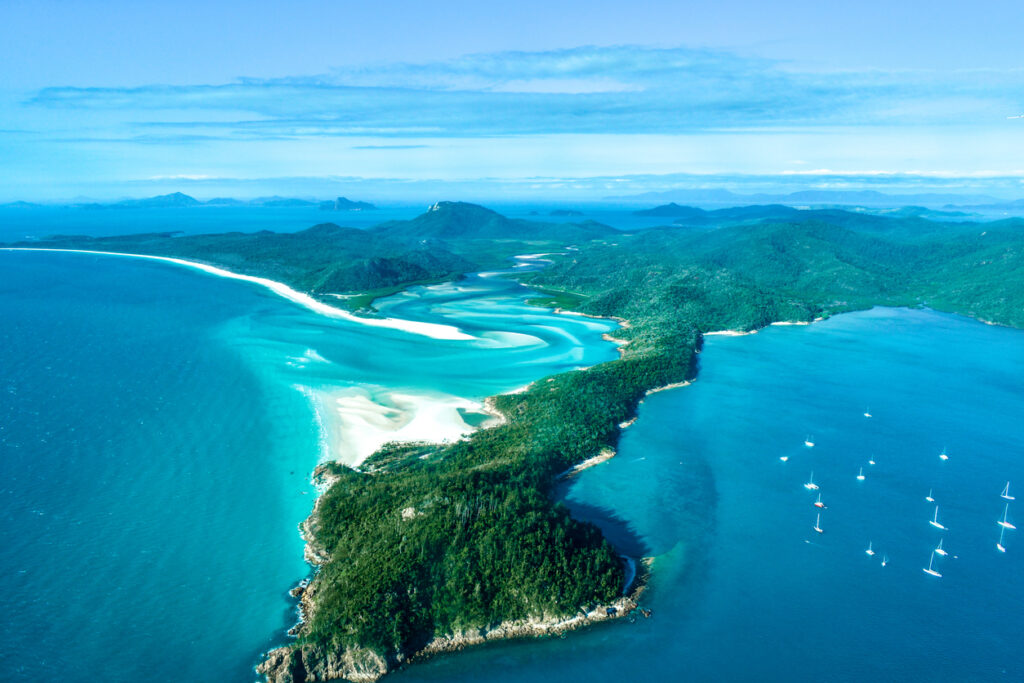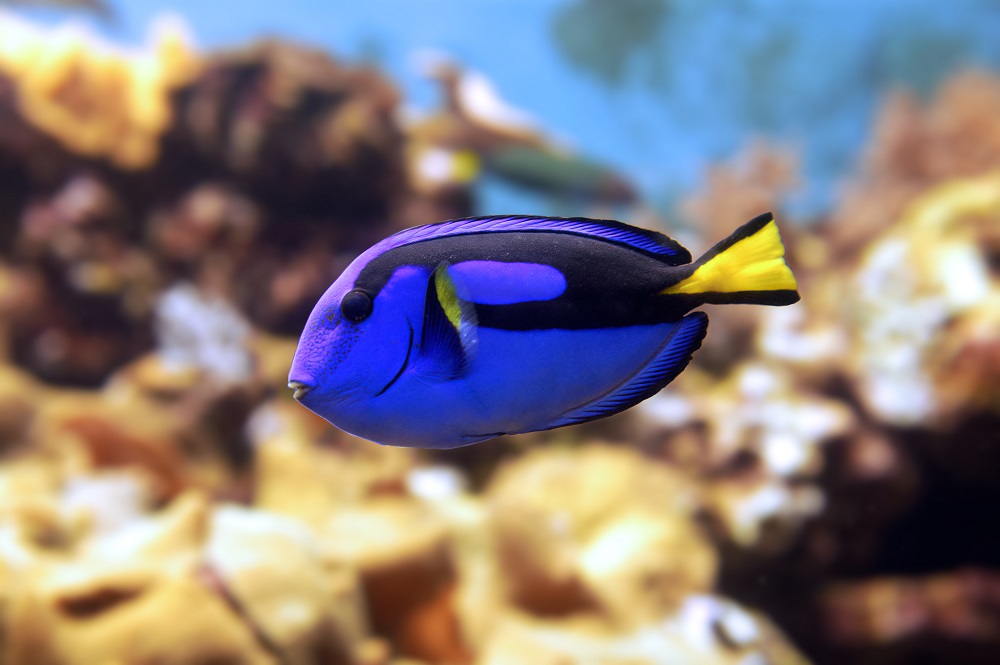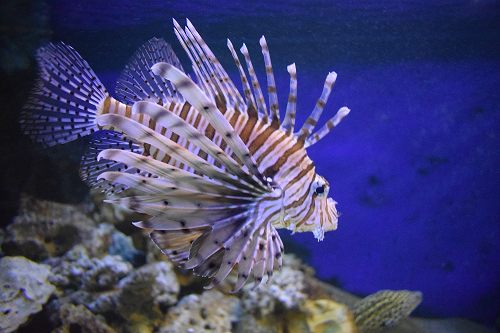The Great Barrier Reef is one of those precious few places on Earth that must be seen to be believed. Home to more fish, animals, and corals than anywhere else on the planet, it’s a cherished marine habitat of unparalleled beauty, size, and scale.
But what exactly is it? Where in the world can you find it? And what sort of fish does it contain?
Get to grips with this undeniable world wonder in our blog about the Great Barrier Reef.
So, what is it exactly?
The Great Barrier Reef is the world’s largest coral reef ecosystem. It provides a home for a huge variety of marine life, not to mention over 400 types of coral which aren’t found anywhere else on the planet.
What many people fail to realise about the reef is that this is a living structure. It’s made up of a baffling complex network of living, breathing coral reefs which are so big, colourful and far-reaching, they’re actually visible from space.
That’s not to say the Great Barrier Reef exists just below the water line, however. The site ranges from deep-water corals to sweeping islands and ‘cays’, including the paradise isles of Whitsunday. This makes it one of the most spectacular natural landscapes on Earth, and somewhere you must visit if you ever get the opportunity.
Since 1981, the reef has been inscribed as a UNESCO World Heritage Site. This means that it’s protected from things like development, fishing, and drilling for oil, all of which are proven to have disastrous consequences for marine life and the integrity of underwater ecosystems.

Where is the Great Barrier Reef and how big is it?
The Great Barrier Reef is located off the northeast coast of Australia, around 250 kilometres from Queensland. If you know your maps and fancy looking up precisely where the GBR is, you’ll find the centre of it at around 18° S, 147 °E.
Quite remarkably, the reef extends over an area of around 348,000 kilometres in size – 100,000 more than the United Kingdom. It’s thought to contain over 2,500 individual reefs as well as over 900 islands, making it the single-largest marine ecosystem on the planet by a considerable margin.
From the shallow waters of the Queensland coast, the Great Barrier Reef extends out over a truly vast distance, well beyond the continental shelf. At its deepest, the reef plunges to a depth of 2,000 metres, while many of its islands stand over 1,000 metres above sea level. That means, from its deepest point to its highest, the reef is around the same size as Mount Etna, Europe’s most active volcano.

What species can be found in the Great Barrier Reef?
From the Queensland Coast to Lady Eliot Island and beyond, the GBR is teeming with life, with over 1,500 species of fish, 4,000 species of molluscs, and 240 seabirds calling the region home (or else migrating through it once a year). So, where to begin when highlighting the massive range of animals that live in the Great Barrier Reef?
For starters, it’s worth noting that the GBR is one of the few places on Earth that supports the dugong, or ‘sea cow’. These gentle, manatee-like creatures are dependent on seagrass meadows, which grow in abundance in the mangrove channels of Hinchinbrook. Their numbers are in decline, which makes the preservation of one of their few natural habitats even more vital.
The reef is also home to the large green turtle, which is among the most endangered of all turtle species. The sad reality is that these beautiful animals are killed for their meat, with the GBR being one of only a few protected sanctuaries where they can live without threat.
Elsewhere, there are thousands of fish of all colours, shapes and sizes living among the GBR’s reefs and islands. Here are a few of our favourites…
Clownfish

That’s right, Nemo lives his best life in the Great Barrier Reef, with the beloved clownfish found in abundance among the Reef’s ‘anemone’ corals. Of course, you can also see these iconic fish a little closer to home at Blue Planet Aquarium.
Regal tang

Oh, look, Dory’s here too! Yes, the recognisable regal tang fish can also be found here, particularly at the seaward edge close to deeper channels. That’s because regal tangs are part of the surgeonfish family, which prefers high-current swimming.
Marlin

You’re unlikely to spot a marlin at the Great Barrier Reef since they’re so fast but believe us, they’re there! These beautiful fish are found in large numbers at the Reef from September to December and can grow remarkably big, with some marlins spotted at the GBR coming in at over 14 feet in length!
Lionfish

Lionfish may be beautiful to look at, but don’t be fooled: they’re among the most venomous fish in our oceans. Of course, that’s what makes them such adept predators, with their spines capable of dealing a deadly blow to both predators and prey. Catch them at the GBR or, if that’s a little too far, right here at Blue Planet Aquarium.
Why is the Great Barrier Reef important?
The Great Barrier Reef is more than just a must-see visitor destination and a natural sanctuary for thousands of marine species. It’s also among the world’s most precious marine habitats, and one that plays a key role in helping to safeguard and protect the surrounding environment.
You see, the complex network of coral reefs at the GBR are essential for maintaining water quality and purification. They also suck up carbon dioxide from the air, making them an integral part of our global fight against climate change.
Have you enjoyed this whistle-stop visit to the Great Barrier Reef? We hope you get to see it for real someday! Until then, Blue Planet Aquarium’s Coral Cave exhibit is the place to discover the beautiful creatures of the GBR. Tap here to plan your next visit.